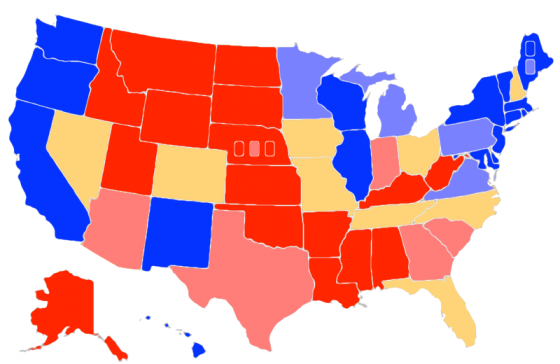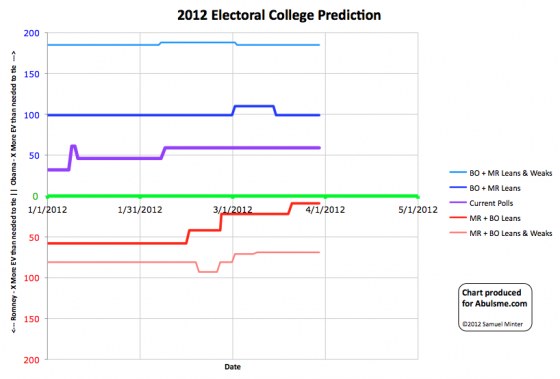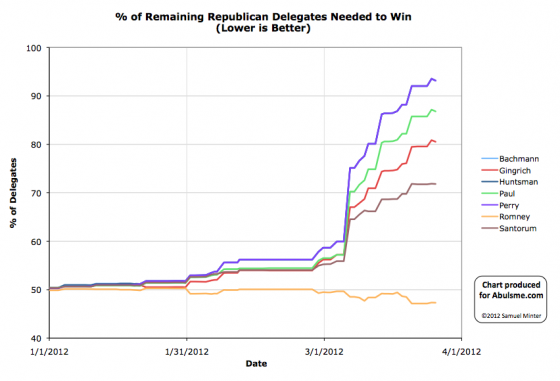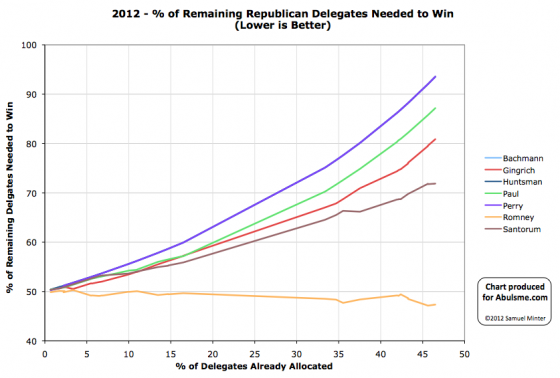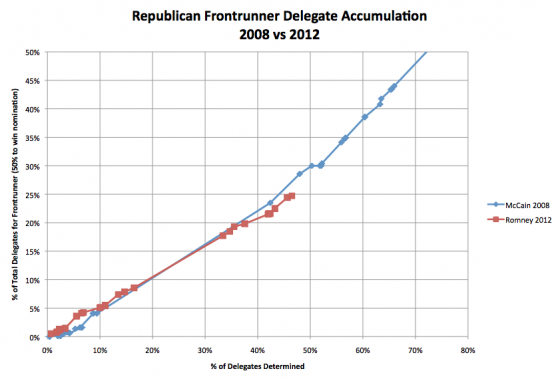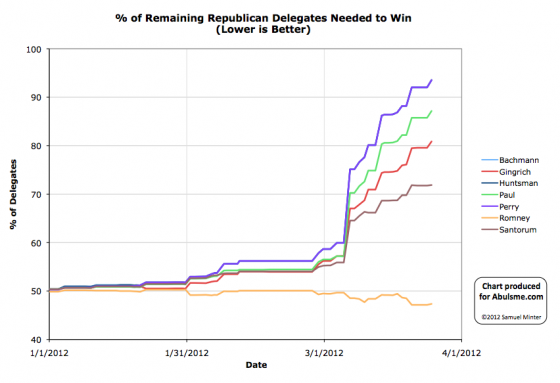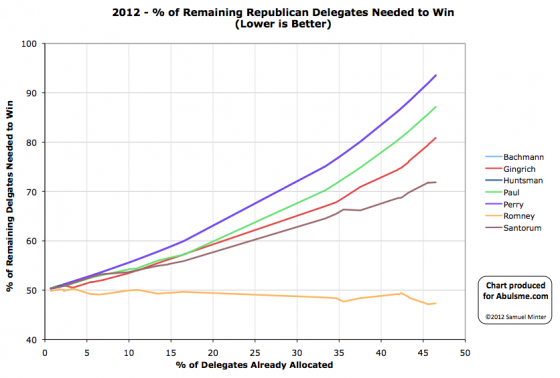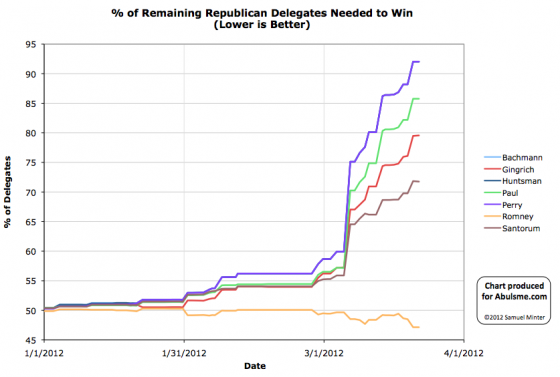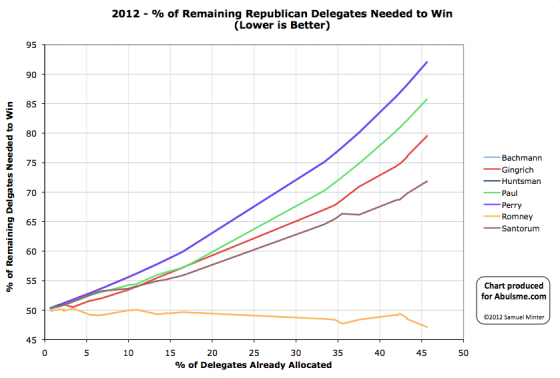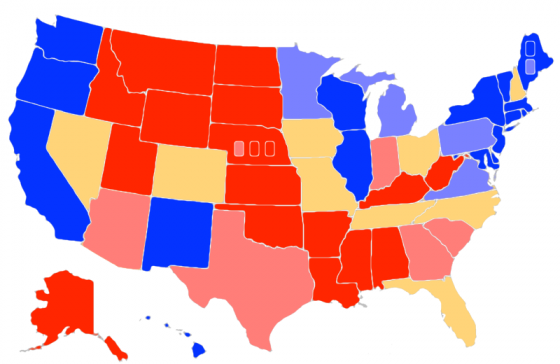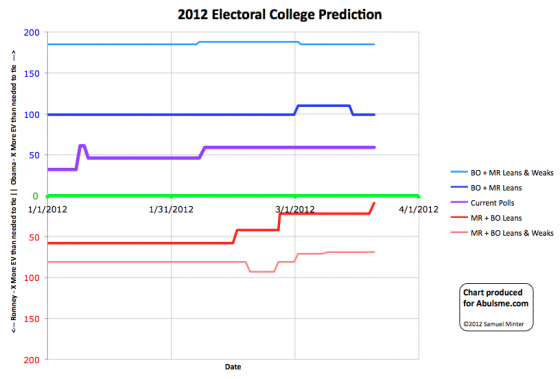In the latest Curmudgeon’s Corner Sam and Ivan talk about:
Just click to listen now: [wpaudio url=”http://www.abulsme.com/CurmudgeonsCorner/cc20120401.mp3″ text=”Recorded 1 Apr 2012″] or |
 |
|
As I did with the Precinct Caucuses on March 3rd, I’ll be attempting to Live Tweet the Snohomish County Republican Convention today. Follow me @Abulsme. For those who remember my tweets on March 3rd only three people showed up for my precinct and given there were three delegate slots available to the county convention, all three of us became delegates to the next level. Although it is non-binding, I had expressed my preference for Ron Paul. (The other two supported Santorum.) Last weekend I attended an orientation meeting for the Ron Paul delegates. For those interested, I talked a little about that meeting on the last episode of Curmudgeon’s Corner. I should have left home already to get all settled at the convention before the crowds arrive. But a few notes before I go… According to the orientation I had last week, in my legislative district, the 44th, almost half of the delegates are Romney supporters, about 25% are Ron Paul Supporters, 15% or so did not have a stated preference, and Santorum and Paul split the rest. There are a little over 260 delegates expected for our LD (I forget the exact number). For anybody to get elected as a delegate to the next level they need more than 50% of the vote of all of the delegates in the LD. This means that if every body shows up and all the Romney folks just vote for each other (and are disciplined and vote for the SAME Romney people), and just a small number of the uncommitted delegates also vote for Romney’s folks, then Romney will end up with 100% of the delegates to the next level, even though he got just under 50% of the delegates from the first round. Meanwhile, if all the Ron Paul folks (for instance) just vote for each other, then none of them gets over 50% of the total vote, and they get no delegates to the next level despite the 25% showing in the first round. Interesting how these things work. For the non-Romney campaigns, the hope is that basically:
It will be fun. Oh, and we’ll get to hear speeches from a ton of local Republican politicians. Woo! Oh, and for the record once again, I am supporting Ron Paul in the Republican caucus process because I think he is the best of the four Republicans currently running. I completely reserve judgement on who I will support in the fall. I’ll think about that once it is completely clear who all the people are on the ballot (not just the Republican and Democrat, which is pretty clear at this point absent some sort of seismic event). OK. Off I go… Map and chart from the Abulsme.com 2012 Electoral College Prediction page. Both assume Obama vs Romney with no third party strong enough to win states. Lines on the chart represent how many more electoral votes a candidate has than is needed to tie under several different scenarios. Up is good for Obama, Down is good for Romney. So my update today included a new PPP poll in Nebraska. This poll included a breakdown by congressional district, which is useful because Nebraska is one of two states (the other is Maine) which currently have the potential of splitting their electoral college vote. Both states do this with 2 electoral votes going to the statewide winner, then 1 electoral vote for the winner of each congressional district. Thanks PPP for actually doing the CD split!! Anyway, as I was adding the new data points for Nebraska at large and each of the three congressional districts, I noticed the previous data for the 1st and 2nd congressional districts included some errors. (Specifically the 2008 Republican and Democratic results were reversed… I use the 2004 and 2008 elections to seed the numbers for states that have had less than five actual Obama vs Romney polls.) The end result of this was that the 1st district had been classified as Weak Romney when it should have been Strong Romney, and the 2nd district was classified as Strong Romney when it should have been Weak Romney. I corrected this and the new poll results didn’t change the classifications again. The net result of this is just that on the map I had the wrong one of the three boxes in Nebraska light red. It should have been the 2nd box instead of the 1st. This has now been corrected. Since both districts are one electoral vote and the changes balanced each other, the lines on the graph do not change at all. The summary remains:
Note 2012 May 23 10:43 UTC: Due to an error in my spreadsheet, a change in status for Wisconsin from Weak Obama to Strong Obama that should have been noted on this update on March 30th, was prematurely made on March 2nd. The corrected time series chart can be seen starting with the May 23rd update. Thanks to Darryl at HorsesAss for finding the mistake. Note 2012 Jun 16 21:22 UTC: Actually, with more information, the Wisconsin transition should have happened on March 31st. See the correction on the June 19th update.
Charts from the Abulsme.com 2012 Republican Delegate Count Graphs page. When a candidate gets down to 0%, they have cinched the nomination. If they get up past 100%, they have been mathematically eliminated. The first chart is by date, the second is by “% of Delegates Already Allocated”. These numbers include estimates of the eventual results of multi-stage caucus processes which will be refined as the later stages occur. I mentioned yesterday that there was some disagreement on interpretation of the rules for how delegates would be allocated in Louisiana. Green Papers said Santorum 13, Romney 7. @FHQ said Santorum 10, Romney 5 and some uncommitted delegates. My charts use the Green Papers Numbers. Well, since yesterday’s update the Louisiana Republican party weighed in… and it was 10-5, not 13-7. So @FHQ was right and wins that argument. So Green Papers updated their numbers. So, net for today: Santorum -3, Romney -2. This adjusts the numbers slightly, but does not change yesterday’s conclusions. Both Romney and Santorum didn’t do as well as they needed in Louisiana to move toward 1144. So it was still an “everybody loses” contest. Just slightly different numbers. For today’s adjustment, the “% of remaining needed to win” changes like this:
So essentially today is an “everybody wins!” day, simply because there are 5 more delegates available today compared to what was thought to be available yesterday. The race summary remains the same. The non-Romneys are rushing toward mathematical elimination. It would take an event like Romney dropping out to give them an actual shot to get to 1144 before the convention. The most likely scenario remains Romney slowly but surely accumulating delegates and getting to 1144. The possibility of the non-Romneys blocking Romney from getting to 1144 remains remote, but not yet so remote that I’m ready to say outright that it is impossible. I had promised an update of the 2008 vs 2012 frontrunner graph after Louisiana. I had thought we would have about 52% of the delegates allocated (or estimated) at this point, but I was wrong. States responsible for about 52% of the delegates have “started their process” according to Green Papers, but not all of those delegates are determined yet, for a variety of reasons. Instead, we are only at about 47%. 52% is a good place to compare because that is where things were in 2008 right after Super Tuesday was all settled. In 2008 we were closest to the 47% mark on February 7th, which was after Super Tuesday, but still with only partial results from those contests. So the comparison will be better after we get past that point. In any case, here is the update after Louisiana: Romney is still behind McCain’s pace four years ago, but not by very much. It isn’t a dramatic difference. It just FEELS like it is because of the very different calendars in 2008 vs 2012. But really, the two candidates are tracking each other pretty closely by this analysis. The chart by Seth at Enik Rising still shows a much bigger apparent difference. (As of when I write this, he has updated for Illinois, but not Louisiana.) In my previous analysis I’d determined that the two graphs actually have very similar data. The difference in how they are perceived is due to three main factors:
Anyway, interesting to look at the data in these two different ways. DC, Maryland and Wisconsin happen on April 3rd… all winner take all. There are no polls in DC and Maryland, but those don’t seem like Santorum country. The most recent poll in Wisconsin, a Rassmussen poll (the only one taken in March so far) has Romney ahead. If Romney does win all three of those contests, we’ll be at 51% of the delegates allocated (or estimated) and Romney will ALMOST have caught up to McCain’s pace in 2008. (Romney will have 29% of the total delegates, where at the comparable point McCain had 30%.) We’ll see if that is how it plays out. I’ll do another update of this chart after we have those results. Charts from the Abulsme.com 2012 Republican Delegate Count Graphs page. When a candidate gets down to 0%, they have cinched the nomination. If they get up past 100%, they have been mathematically eliminated. The first chart is by date, the second is by “% of Delegates Already Allocated”. These numbers include estimates of the eventual results of multi-stage caucus processes which will be refined as the later stages occur. So, Santorum has a “big win” in Louisiana. But, unfortunately for him, not big enough. Green Papers’ Louisiana Results give 13 delegates to Santorum and 7 to Romney. Gingrich and Paul get nothing. Louisiana also has 26 more delegates that will be determined by other means. (Note that there is some question on interpretation of the delegate rules. @FHQ says 10 Santotum, 5 Romney and some uncommitted delegates. We use Green Papers as our source, and they will update if it becomes clear their interpretation of the rules was wrong.) So with a 13-7 split, that is 65% Santorum. To actually be on a pace to catch up and win, he needed to get 71.8% of the delegates. Didn’t happen. Thus with his “big win” Santorum still moves closer to mathematical elimination. That is some win! Of course, Romney also didn’t get the delegate levels he needed to be on the pace he needs. He needed 47.1% of the delegates. The 35% he gets with his 7 delegates is well below that. So, it’s an “everybody loses!” day. Bottom line is that Louisiana doesn’t change much. The three non-Romney’s are racing inevitably toward elimination. They are just too far behind to catch up absent something as major as Romney dropping out of the race… which I don’t think Romney is thinking about doing at this point. Meanwhile, Romney is in a position to eventually win just by continuing to collect delegates at the same pace he has been. Romney has collected 53% of the delegates so far. If he just keeps chugging at those margins, he’ll get to 1144 eventually. But… the non-Romney’s collectively have gotten 47% of the delegates. If they can up that to 53%, then they can still collect enough delegates to block Romney. 47% to 53% is a big move in a political race. But it is still not out of the realm of the possible. (It is getting close though.) A few big slips by Romney. One of the non-Romney’s doing something really impressive. It COULD happen. It is unlikely though. As I’ve said before here, as it becomes clear that none of the non-Romney’s can actually win, it will be harder and harder for them to actually get delegates. So it is far more likely that the percentage of delegates the non-Romneys can manage will decline as we go forward. “% of remaining needed to win” update based on today’s numbers:
We’re still not quite to the half way mark. 46.5% of the delegates allocated (or estimated) at this point. Next up: DC, Maryland, Wisconsin on April 3rd. All winner take all states, so likely to have a bigger impact. Charts from the Abulsme.com 2012 Republican Delegate Count Graphs page. When a candidate gets down to 0%, they have cinched the nomination. If they get up past 100%, they have been mathematically eliminated. The first chart is by date, on the second chart rather than the date on the x-axis, we show the “% of Delegates Already Allocated” as this better represents the progress through the race. Note that these numbers include estimates of the eventual results of multi-stage caucus processes which will be refined as the later stages occur. Right after the caucuses there, delegates from Alaska were estimated as Romney 8, Santorum 7, Paul 6, Gingrich 3. The district Convention vote is now final, and the estimate changes to Romney 8, Santorum 8, Paul 6, Gingrich 2. So net for the day: Santorum +1, Gingrich -1. (The three superdelegates from Alaska are still up for grabs.) This of course doesn’t substantially change anything. (For the die hards: Santorum’s % of remaining needed to win declines from 71.84% to 71.76%, while Gingrich’s rises from 79.49% to 79.57%.) Map and chart from the Abulsme.com 2012 Electoral College Prediction page. Both assume Obama vs Romney with no third party strong enough to win states. Lines on the chart represent how many more electoral votes a candidate has than is needed to tie under several different scenarios. Up is good for Obama, Down is good for Romney. Surely we must be close to Romney’s nadir, right? We expect him to suffer in the polls while going through his primary battle, but once it becomes clear he is the nominee and he can start pivoting to the general election, he should start fighting back. Right? That’s what we expect? Romney should hope that this is his low point, because his best case is now just barely squeaking out a win… The new update today to my “last five poll average” for Virginia pushes Obama’s lead to over 5%. So I move the state out of the swing state category and into “Weak Obama” which I color light blue above. This change makes our summary look like this:
This means that in Romney’s best case (that is, he wins every single swing state), he wins with only 9 more electoral votes than the 269 needed to tie. That is getting awfully close. That would mean that out of the nine swing states (defined as states where the leading candidate is ahead by less than 5% in the polls)…
(Meanwhile, in Obama’s best case, he wins with 99 more electoral votes than needed to tie.) That is of course if the election was today, which it is not. We have a long way to go. These lines will move up and down quite a bit before we get to November. |
||||||||||||||||||||||||||||

